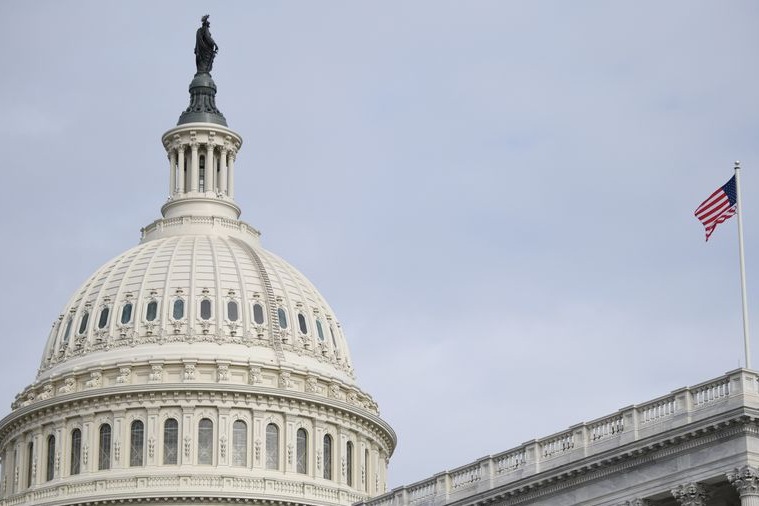China needs to fuel recovery in 2023


Editor's note: China will strive to make new strides in economic development in 2023, with measures to take new steps in reform and opening-up, achieve new progress in building an ecological civilization, and boost the well-being of people, among others. Four experts share their views with China Daily.
After a tough 2022, China will move toward recovery in 2023, amid stagnation in the US and deep recession in the eurozone.
Battered by domestic challenges and disruptive external headwinds, the Chinese economy has coped with a tough year. The lockdown of Guangzhou's transportation hub, and the latest wave of novel coronavirus cases in Beijing and other major cities highlight the most recent challenges.
And if it's been a hard year for China, it's been worse elsewhere, thanks to misguided economic policies and ill-advised geopolitics. The risk of recession casts a dark shadow over the US, which remains deeply polarized. The eurozone is facing a deep recession, Japan's economy is shrinking, and the United Kingdom is struggling with the worst fall in living standards since records began.
Amid this dire international landscape, China's recovery would help brighten the global economic prospects.
From headwinds
Until the fall, China's economic data has reflected challenges. Retail sales and domestic tourism have slumped, mainly because of recurrent lockdowns. That's the net effect of mobility restrictions, which undermine effective demand.
The reverse side of reduced consumption is rising household deposits and falling equity markets. When people feel uneasy about the future, they save rather than consume, while businesses defer investment decisions and investors flee to liquidity.
Industrial production has moderated, due to supply-chain disruptions among the provinces. While automobile and new electric vehicle production signals progress, the double-digit fall of the semiconductors is the direct result of US-led geopolitics. In turn, the slowing growth of exports reflects recessionary risks in the US and the European Union, two of China's major trading partners.
Following several years of adverse liquidity in the real estate sector, the new property market support measures, particularly the government's 16-point recovery plan, will contribute to stabilization. While default risks remain elevated with weaker developers, larger quality developers will benefit from consolidation.
Through the year, investment, fueled mainly by the public sector, has offset effective demand, as evidenced by higher output in steel and new renewable projects. That will add to debt pressures, particularly at the local level. Meanwhile, the Fed's aggressive tightening has complicated the environment for the People's Bank of China to make its prudent monetary policy more flexible.
To recovery
Yet, the real story of 2023 is likely to be the impending recovery of the Chinese economy. A central determinant in unleashing the Chinese consumption potential, private sector investment and investor confidence hinges on the fine-tuning of the dynamic clearing policy to COVID-19 cases and the consequent broad-based recovery.
Though gradual, the implementations of new rules to better balance the pandemic fight and economic development could result in a surge of pent-up demand by the second quarter of 2023. Such progress would strengthen economic data. Retail sales would climb. Consumer confidence, even domestic tourism, would pick up with rising consumption, including (costlier) consumer durables, while household deposits would decrease accordingly.
Businesses would invest more, including foreign multinationals as their home markets in the West will stagnate. Property markets would gradually normalize and also benefit from pent-up demand. Chinese investors would return to equity markets, which would also be attractive to overseas investors seeking diversification. The MSCI China Index heralds the turnaround; it was up 24 percent in November, compared to only 2 percent for the S&P 500 Index.
Industrial production would pick up. Despite demand destruction in the West, the Belt and Road Initiative will promote steady progress on the back of recovery in Southeast Asia, which China is both driving and benefiting from. Less fixed asset investment by the public sector would reduce local governments' debt pressures.
Downside, upside
In a downside scenario, domestic woes would prove more adverse because China would shun away from reforms and opening-up policies. This undesirable scenario is aggressively propagated by neoconservatives in the West, although it has nothing to do with facts.
In reality, both reforms and opening-up policies will continue in China.
Certainly, domestic challenges will remain tough. The population is aging. The economy needs to move from investment toward consumption. Despite decelerating economic growth, per capita incomes must continue to rise. Worse, these challenges must be met amid the West's purposeful efforts to undermine such efforts.
Yet, in each case, policymakers have shown willingness to rely on reforms to overcome challenges. The aging-related reduction of the labor force will be significantly smaller than expected, as the new UN projections attest.
Furthermore, the share of investment to GDP likely peaked at 42 percent in the past half a decade, with a gradual decline set to ensue.
And thanks to continued reforms and "common prosperity" policies, Chinese catch-up in productivity and per capita incomes has climbed to more than one-third of the US level, even as secular growth is decelerating to 4 percent in the late 2020s.
A brighter outlook
Analysts estimate China's GDP growth for 2022 will be 3 to 3.3 percent. Then again, the growth rates of all major economies have been downgraded for 2022.
The real story is that, thanks to the expected rebound, China's growth could climb to 4.5 percent to 5.0 percent in 2023. The precondition is that prevention and control policies will continue to be refined to make them more agile and flexible and the global landscape remains manageable, as indicated by the easing of Sino-US tensions after the recent meeting between President Joe Biden and President Xi Jinping.
With recovery in 2023, China's long-term development goals — primary modernization by 2035 and modernization in all respects by 2050 — remain attainable within schedule.
The views don't necessarily represent those of China Daily.
The author is the founder of Difference Group and has served at the India, China and America Institute (USA), Shanghai Institutes for International Studies (China) and the EU Center (Singapore).
Balanced approach to real estate https://www.chinadaily.com.cn/a/202211/28/WS6383ee88a31057c47eba14bc.html
Job policy must work smarter, not harder https://www.chinadaily.com.cn/a/202211/28/WS6383ee8ba31057c47eba14c1.html


































